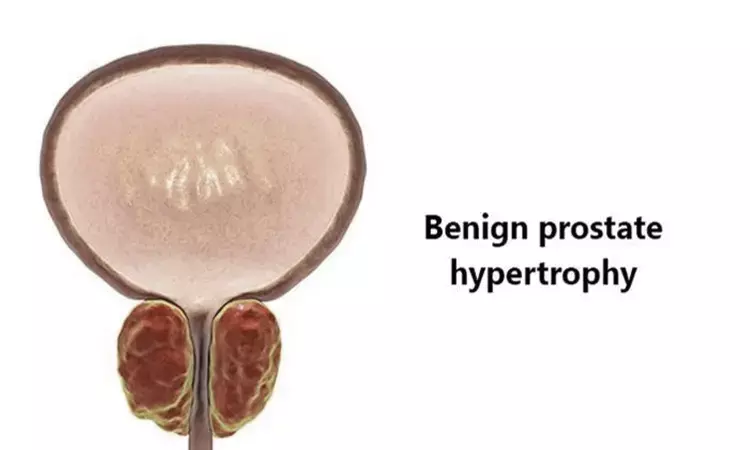- Home
- Medical news & Guidelines
- Anesthesiology
- Cardiology and CTVS
- Critical Care
- Dentistry
- Dermatology
- Diabetes and Endocrinology
- ENT
- Gastroenterology
- Medicine
- Nephrology
- Neurology
- Obstretics-Gynaecology
- Oncology
- Ophthalmology
- Orthopaedics
- Pediatrics-Neonatology
- Psychiatry
- Pulmonology
- Radiology
- Surgery
- Urology
- Laboratory Medicine
- Diet
- Nursing
- Paramedical
- Physiotherapy
- Health news
- Fact Check
- Bone Health Fact Check
- Brain Health Fact Check
- Cancer Related Fact Check
- Child Care Fact Check
- Dental and oral health fact check
- Diabetes and metabolic health fact check
- Diet and Nutrition Fact Check
- Eye and ENT Care Fact Check
- Fitness fact check
- Gut health fact check
- Heart health fact check
- Kidney health fact check
- Medical education fact check
- Men's health fact check
- Respiratory fact check
- Skin and hair care fact check
- Vaccine and Immunization fact check
- Women's health fact check
- AYUSH
- State News
- Andaman and Nicobar Islands
- Andhra Pradesh
- Arunachal Pradesh
- Assam
- Bihar
- Chandigarh
- Chattisgarh
- Dadra and Nagar Haveli
- Daman and Diu
- Delhi
- Goa
- Gujarat
- Haryana
- Himachal Pradesh
- Jammu & Kashmir
- Jharkhand
- Karnataka
- Kerala
- Ladakh
- Lakshadweep
- Madhya Pradesh
- Maharashtra
- Manipur
- Meghalaya
- Mizoram
- Nagaland
- Odisha
- Puducherry
- Punjab
- Rajasthan
- Sikkim
- Tamil Nadu
- Telangana
- Tripura
- Uttar Pradesh
- Uttrakhand
- West Bengal
- Medical Education
- Industry
Water vapor thermal therapy effective for lower urinary tract symptoms associated with BPH: Study

USA: A minimally invasive water vapor thermal therapy was shown to provide effective symptom relief and improved quality of life (QOL) in patients with moderate to severe lower urinary tract symptoms (LUTS) due to benign prostatic hyperplasia (BPH), says a new study. Symptom relief and improved QOL remained durable throughout 4 years.
"Results imply that for men with moderate to severe LUTS at risk for BPH progression early intervention with this thermal therapy rather than using pharmaceutical agents or invasive surgery may be an ideal option," Kevin T. McVary, Department of Urology, Loyola University Medical Center, Maywood, IL, and colleagues wrote in their study published in the journal Urology.
Approximately 70% of men by the seventh decade of life have benign prostatic hyperplasia. This condition is commonly associated with progressive development of voiding and storage related LUTS. There are many option for BPH management with a range of efficacy, invasiveness, and cost. Giving therapy to a patient should rely on careful physical evaluation and informed discussion with his provider. Decision making varies in accordance to gland size, severity of symptoms, anatomical features, and efficacy and safety of the different treatments.
Minimally invasive surgical treatments (MISTs), both thermal and mechanical expander options, represent alternative intervention before or after any pharmacotherapy. The most recent MIST is water vapor thermal therapy using radiofrequency to create thermal energy (Rezūm System, Boston Scientific, Marlborough, MA) in the form of water vapor.
Against the above background, Dr. McVary and colleagues report 4-year outcomes of the randomized controlled trial of water vapor thermal therapy for treatment of moderate to severe lower urinary tract symptoms due to benign prostatic hyperplasia.
For the purpose, the researchers followed 188 subjects; 135 men ≥50years old, International Prostate Symptom Score ≥ 13, maximum flow rate (Qmax) ≤15 mL/s and prostate volume 30 to 80 cc treated with Rezūm System thermal therapy for 4 years. Subset of 53 men who requalified for crossover from control to active treatment were followed 3 years.
Following were the study's key findings:
· Lower urinary tract symptoms were significantly improved within ≤3 months after thermal therapy and remained consistently durable (International Prostate Symptom Score 47%, quality of life 43%, Qmax 50%, Benign Prostatic Hyperplasia Impact Index 52%) throughout 4years; outcomes were similarly sustained in crossover subjects at 3years. Surgical retreatment rate was 4.4% over 4years.
· No disturbances in sexual function were reported.
To conclude, the minimally invasive thermal therapy provides effective symptom relief and improved QOL that remains durable for over 4years. It is applicable to all prostate zones with procedures performed under local anesthesia in an office setting.
Reference:
The study titled, "Rezūm Water Vapor Thermal Therapy for Lower Urinary Tract Symptoms Associated With Benign Prostatic Hyperplasia: 4-Year Results From Randomized Controlled Study," was published in the journal Urology.
DOI: https://doi.org/10.1016/j.urology.2018.12.041
Dr Kamal Kant Kohli-MBBS, DTCD- a chest specialist with more than 30 years of practice and a flair for writing clinical articles, Dr Kamal Kant Kohli joined Medical Dialogues as a Chief Editor of Medical News. Besides writing articles, as an editor, he proofreads and verifies all the medical content published on Medical Dialogues including those coming from journals, studies,medical conferences,guidelines etc. Email: drkohli@medicaldialogues.in. Contact no. 011-43720751


